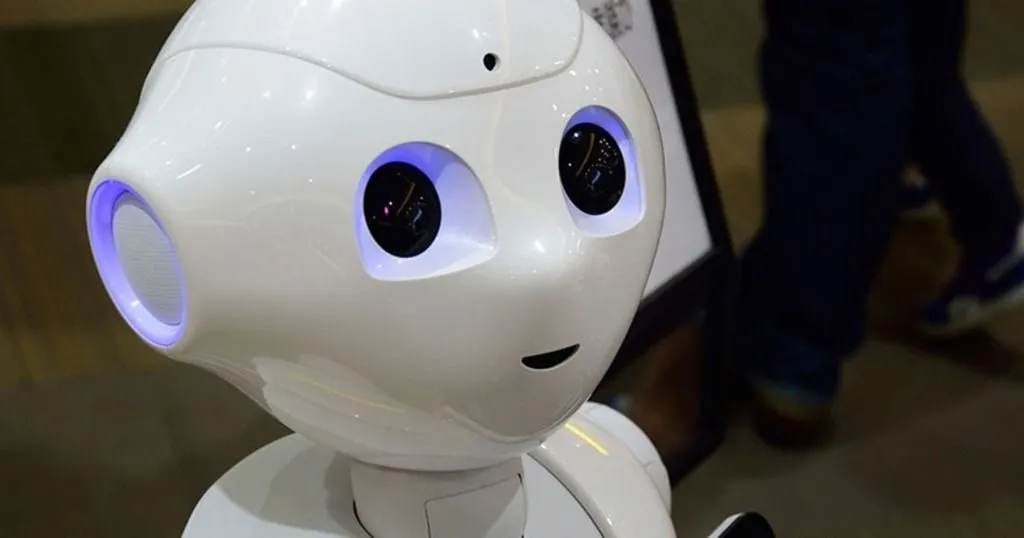Human-Robot Interaction: Robots in the spotlight
Read these four blog articles to find out how and why human-robot interaction is studied by many researchers around the world!
Posted by
Published on
Wed 19 Feb. 2014
Topics
| Human Factors | Human-computer Interaction | Human-robot Interaction | Robotics |

Self-driving cars, humanoid robots, pet-like autonomous robots, home robots, or social robots: robots are all around us. Would you like to know what kind of research is done is this area? Read these four blog articles to find out how and why human-robot interaction is studied by many researchers around the world!
Robot-child interactions – helping children with autism learn skills
Sandra Costa and colleagues explored if a robot, in this case KASPAR (a humanoid robot with a static body, able to move its arms and head in order to simulate gestures in social interaction), could help elicit interactions between an autistic child and another person and if KASPAR could help the children learn more about body parts and learn to identify their own body parts.
Read more about robot-child interactions!
Can you trust a robot?
David DeSteno and colleagues wanted to find out how people can assess the trustworthiness of a business partner and how this trust is earned. They performed two experiments in order to identify non-verbal cues related to trustworthy behavior. In one experiment, they used the state-of-the-art robot Nexi from MIT. The robot was programmed to mimic specific human behaviors.
Human-robot interaction in remote friendships and family relations
Fotios Papadopoulos, Kerstin Dautenhahn, and Wan Ching Ho investigated the role of interactive robots as communication mediators. For this study, a Sony AIBO robot was used. This is a little pet-like autonomous robot that is able to learn and mature.
Read the full blog post here
Attracting attention in a simulated living room
Francesco Piunti and colleagues chose to use robots in their study to determine the amount of time it took a robot to draw attention to itself while a participant was watching television. They investigated the use of bimodal cues and how that impacted reaction time. Interested in learning more about how these researchers used bimodal cues to attract the attention of the participants and study reaction times?
FREE TRIAL: Try The Observer XT yourself!
Request a free trial and see for yourself how easy behavioral research can be!
- Work faster
- Reduce costs
- Get better data
Would you like to learn more about human-robot interaction?
Check out these articles:
- Bartneck, C.; Kanda, T.; Mubin, O.; Al Mahmud, A. (2009). Does the design of a robot influence its animacy and perceived intelligence? International Journal of Social Robotics, 1, 195-204.
- Costa, S.; Lehmann, H.; Robins, B.; Dautenhahn K.; Soares, F. (2013). "Where is your nose?" - Developing body awareness skills among children with autism using a humanoid robot. ACHI 2013.
- DeSTeno, D.; Breazeal, C.; Frank, R.H.; Pizarro, D.; Baumann, J.; Dickens. L.; Lee, J.J. (2012). Detecting the Trustworthiness of Noval Partners in Economic Exchange. Psychological Science, 23.
- Kozima, H.; Michalowski, M.P.; Nakagawa, C. (2009). Keepon: a playful robot for research, therapy, and entertainment. International Journal of Social Robotics, 1, 3-18.
- Papadopoulos, F; Dautenhahn, K.; Ho, W.C. (2012). Exploring the use of robots as social mediators in a remote human-human collaborative communication experiment. Journal of Behavioral Robotics, 3 (1), 1-10.
- Wood, L.J.; Dautenhahn, K.; Rainer, A.; Robins, B.; Lehmann, H.; Syrdal, D.S. (2013). Robot-Mediated interviews - How effective is a humanoid robot as a tool for interviewing young children? Plos One, 8 (3), DOI:10.1371/journal.pone.0059448
Related Posts

Effective security screening and airport processes

Machine learning and object detection
